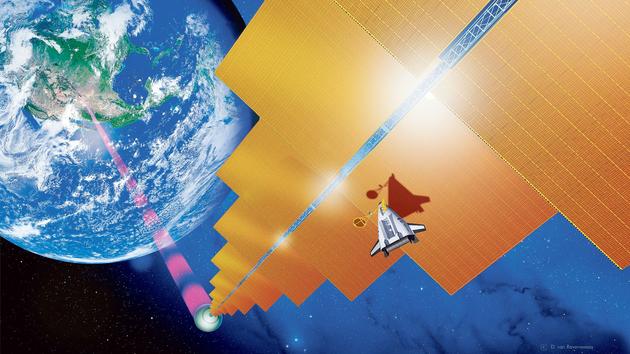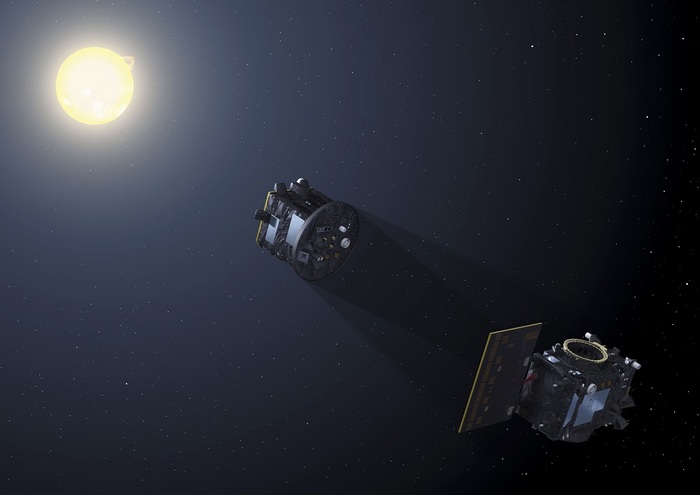In his short story entitled
Reason,
published in 1941, science fiction author Isaac Asimov imagines that humans capture solar energy in space to redirect it to our planet.
Eighty years later, this apparently incongruous idea is gaining ground among scientists and the military.
The California Institute of Technology (Caltech), near Los Angeles, recently announced that it will test a process to transfer electrical energy from a satellite to our planet using radio frequency waves. American has already been carrying out conclusive tests for a year using a small solar panel, transported by NASA's X-37B space shuttle, at an altitude of 400 kilometers.
To discover
Covid-19: the third vaccine dose, instructions for use
Read also
Wood-fired boiler, heat pump ... In which equipment to invest to reduce your heating bill?
The means necessary for the emergence of such a solution seem disproportionate, and yet.
A report released this summer by British consulting firm Frazer-Nash, using data provided by major groups like Airbus and Thales, indicates that the cost per megawatt hour (MWh) of space solar power could eventually be half that of new generation nuclear power.
The bill for the Hinkley Point C EPR plant in England thus amounts to 27 billion euros for 3.2 gigawatts (GW).
In comparison, a 2GW solar satellite would cost 18.8 billion euros to develop and build, then 4.2 billion euros per additional 2GW unit, according to the firm Frazer-Nash.
Which would represent a good deal.
Solar night and day
China wants to be offensive on the subject. Three years ago, she set up an experimental base in Chongqing (center of the country), where she is testing microwave transmission from hot air balloons. The Middle Kingdom has announced the construction by 2030 of a 1-megawatt orbiting solar power plant, which will be 600 by 300 meters. A 1-gigawatt model in 2045 will follow, a thousand times more powerful, therefore, requiring a base of… 1.7 km2! Figures that make you dizzy.
By freeing itself from the atmosphere and the clouds, which filter the sun's rays, space solar has a better theoretical yield.
"A solar power plant in orbit can recover 7.6% of the sun's energy despite all the losses, against 1.8% for a solar power plant on the ground,"
suggests Philippe Coué, an expert in the space industry.
Above all, it operates day and night and constantly benefits from an optimal orientation in relation to the sun thanks to the geosynchronous trajectory of the satellite.
See also
Paris buys thousands of trees to green its streets
Recent advances bring us closer to this perspective.
The efficiency of solar cells has never been higher.
“The new-generation rolling solar panels, already used on the Chinese space station Tianhe, take up less space and mobilize less mass,”
underlines Philippe Coué.
Certainly, the facilities planned to operate a solar power plant in orbit are immense.
But, according to NASA, the cost to send 1 kg of material into space has been divided by 20 in ten years.
A performance made possible in particular by SpaceX's reusable launchers.
Technical obstacles
However, there are still major technical obstacles to overcome before space solar is considered on an industrial scale. The transmission of energy by microwaves through the atmosphere generates significant losses and
"could make it necessary to create no-fly zones",
points out Olivier Sanguy, editor-in-chief of space news at the City of space. Space waste, the quantity of which is constantly growing, endangers the integrity of solar panels and raises the question of their maintenance. As for the receivers on Earth, they too will take up a lot of space -
"infrastructures of several square kilometers"
, predicts Philippe Coué.
The European Space Agency also anticipates that the first applications of space solar will be found outside the Earth: it could make it possible to supply electricity to scientific bases on the Moon or on Mars.
At best, in the 2030s.
Le Figaro
Society, health, environment, education, energy
»Discover the actors and initiatives of change









